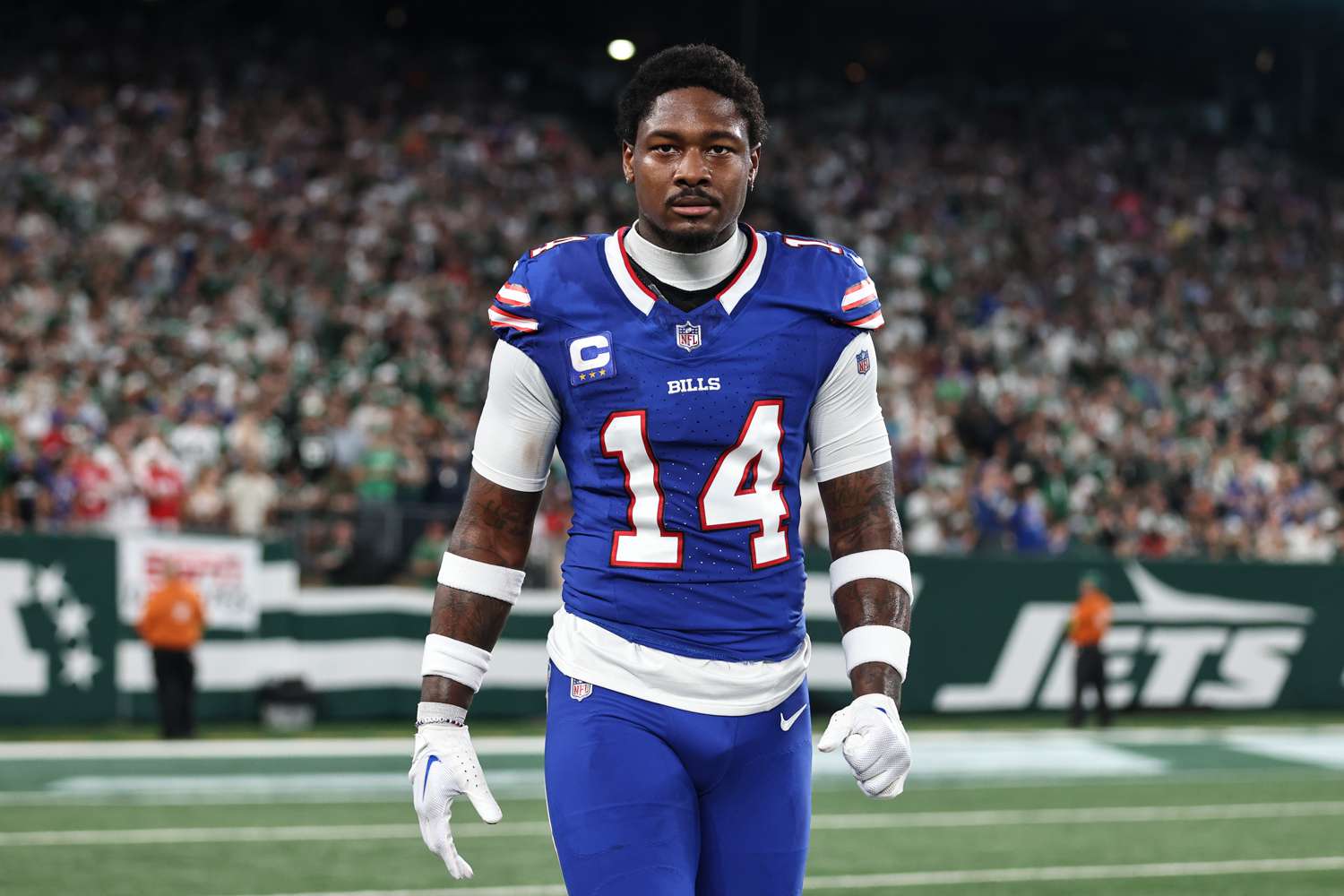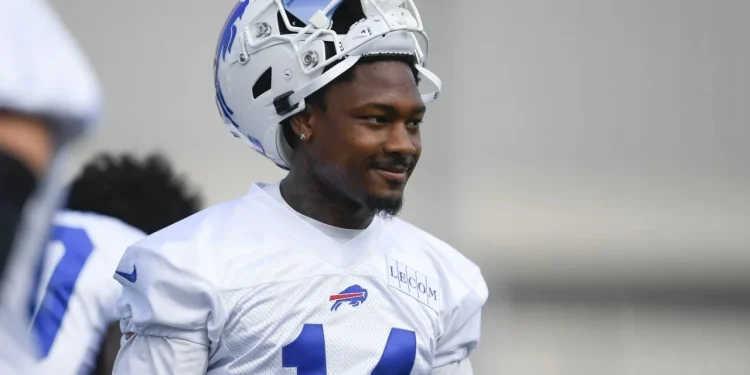The Buffalo Bills’ recent decision to trade four-time Pro Bowl wide receiver Stefon Diggs to the Houston Texans marked a significant shift in the team’s strategy and roster dynamics. The move, while sudden, was not without its reasons.
Bills general manager Brandon Beane, in a candid conversation on The Athletic Football Show, shed light on the rationale behind this decision, which has been the subject of extensive debate among fans and analysts alike.

Despite the undeniable talent Diggs brought to the field, the decision to trade him this offseason was influenced heavily by financial considerations. The Bills chose to absorb a substantial $31 million in dead money—a bold move that highlights their willingness to prioritize long-term fiscal health over short-term benefits.
This decision could have been delayed, spreading the financial impact over multiple seasons, but the urgency to address the situation now was palpable.
Unpacking Brandon Beane’s Blunt Commentary
Brandon Beane’s frank discussion with podcast host Robert Mays revealed a mix of strategic foresight and a hint of frustration. Beane described the contract situation with Diggs as an “albatross” around the team’s neck, a term that underscores the burden the front office felt in managing the star receiver’s hefty salary cap impact.

“A player of his [ Stefon Diggs’] caliber, you weigh a lot of things,” Beane explained. “From a cap standpoint, we decided just to go ahead and eat it now. We think we can compete and do what we need to do by eating it now.”
This straightforward acknowledgment reflects a decisive approach to team management, where long-term viability trumps short-term gains. The use of “albatross” might seem harsh, but it conveys the depth of the challenge the Bills faced with Diggs’ contract, especially considering his previous productivity and high earnings.

Tension Beneath the Surface
The trade not only highlights financial strategy but also hints at underlying tensions. Diggs had voiced his frustrations with the franchise, despite being one of its most productive players during his tenure. His departure, therefore, might also be seen as a move to harmonize the locker room dynamics and align the team’s roster with its broader strategic goals.
What Lies Ahead for the Buffalo Bills and Stefon Diggs?
Looking forward, the Bills face the challenge of recalibrating their team dynamics without one of their key players. The decision to take the financial hit now rather than later speaks volumes about their confidence in the team’s current roster and prospects. It also sets a precedent for how the franchise aims to manage star players and significant contracts moving forward.

The Bills’ approach—balancing financial health with team chemistry and performance—will be closely watched. As they navigate this transitional phase, the effectiveness of their strategies will likely influence not just their performance in the upcoming seasons but also how other NFL teams manage similar situations.
In a league where player transactions are as strategic as the plays on the field, the Bills have made a clear statement with the Diggs trade: fiscal responsibility and team harmony are paramount, even at the cost of parting ways with top talent.

Source: fansided









